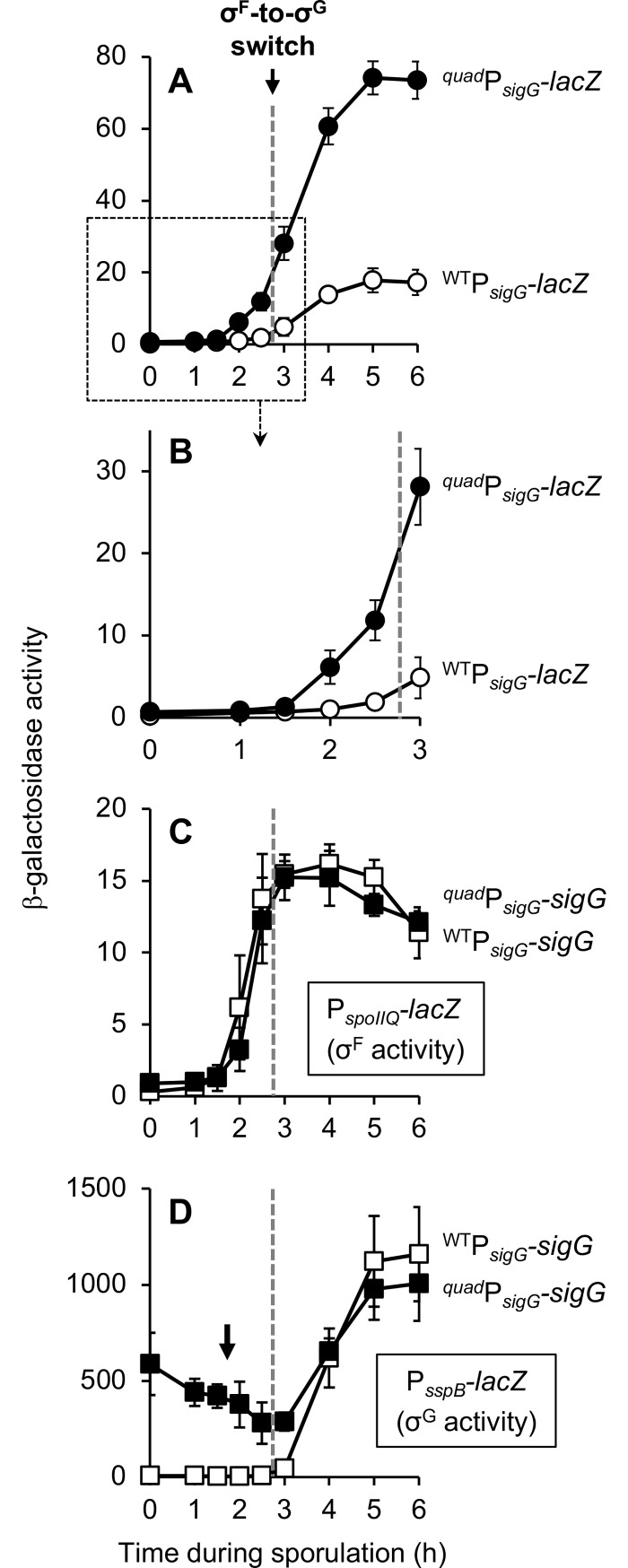Fig 6. The identified transcriptional and translational regulation of sigG diminishes sigG expression by 4-6-fold and is required to prevent aberrant activity of σG.
(A, B) Expression of a PsigG reporter is increased by 4-6-fold in the absence of the four regulatory features identified in this study. β-Galactosidase production was monitored during sporulation of strains harboring PsigG-sigG1-28-lacZ (WTPsigG-lacZ; open circles) or a variant in which all four features of sigG that dampen expression were simultaneously removed or repaired, 15ntPsigGmut7-ATG-RSSsigG2-28-lacZ (quadPsigG-lacZ; closed circles) (strains EBM177 and EBM262, respectively.) Note that (B) provides a zoomed view of the data from the boxed area of (A). (C, D) Expression of sigG from regulatory sequences lacking the four regulatory features identified in this study causes aberrant σG activity during a time course of sporulation. β-Galactosidase production from (C) the σF-dependent PspoIIQ-lacZ reporter or (D) the σG-dependent PsspB-lacZ reporter was monitored during sporulation of strains in which sigG was expressed from its wild type regulatory sequences (WTPsigG-sigG; open squares) or from regulatory sequences modified to remove or repair the four features identified in this study to dampen sigG expression (quadPsigG-sigG; closed squares). (PspoIIQ-lacZ strains were CFB429 and CFB431, respectively. PsspB-lacZ strains were CFB435 and CFB437, respectively.) The black arrow in (D) indicates aberrant σG activity at early times of sporulation. The timing of the σF-to-σG switch, between sporulation hours 2.5 and 3, is indicated in each panel by a dashed gray line. For all panels, error bars indicate ± standard deviations based on three independent experiments.

